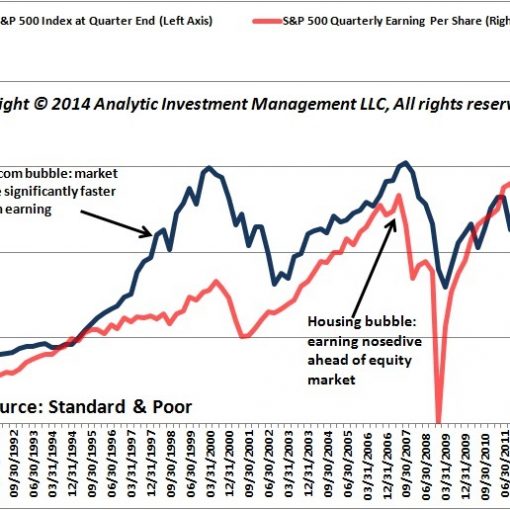It’s not the easiest market out there for income investors.
With bond yields being depressed for so many years (and still extremely low by any historical standard) investors have scoured the globe for yield, which has pushed the yields on many traditional income investments – namely, bonds and dividend stocks – to levels far too low to be taken seriously in my view.
In my opinion, bond yields have been rising since September, due in part to expectations of greater economic growth and the inflation that generally comes with it. This has put pressure on all income-focused stocks.

Dividend Outliers
Here are five dividend stocks that may be worth a look in my view.
Cedar Fair
Market value: $3.7 billion
Let’s start with amusement park operator Cedar Fair, LP (FUN).
Cedar Fair is organized as a master limited partnership (MLP) rather than as a corporation. As a pass-through entity, Cedar Fair avoids corporate taxation.
Even at today’s lower corporate rate of 21%, avoiding a layer of taxation is a big deal. All the same, most mutual funds avoid MLPs, and many investors are intimidated by the tax complexity.
Of course, Cedar Fair is an outcast even among MLPs. Most MLPs are invested in the energy sector, and specifically in midstream oil and gas pipelines. To the extent that you have institutional interest in MLPs, it tends to be in pipeline stocks.
That’s OK in my view. At current prices, Cedar Fair yields 5.1%, and importantly, it has been steadily increasing its payout since 2012. Cedar Fair raised its distribution by a modest 4% at the end of last year, but the payout is up 123% since 2010.
EPR Properties
Market value: $4.1 billion
While most real estate investment trusts specialize in broad asset classes such as apartments or office buildings, EPR Properties (EPR) has a very specific niche, focusing mostly on entertainment.
EPR’s holdings include a wide range of non-traditional assets, including movie theaters, ski areas, golf driving ranges and charter schools.
Its largest tenants include major theater chains like AMC Entertainment (AMC) and Cinemark (CNK), popular golf chain TopGolf and ski resort operator Peak Resorts (SKIS).
In my view, EPR’s management has proven its talent in finding accretive deals in this specialized space, and the stock is priced to more than adequately compensate for these risks.
At current prices, EPR yields an attractive 7.3%, and the REIT has in the recent years raised its dividend by a little more than 6% per year. That’s well in excess of the rate of inflation.
Iron Mountain
Market value: $9.3 billion
Iron Mountain (IRM, $32.71) is one of several companies involved in cloud storage and data centers, but it’s far more than that. Its diverse collection of businesses also includes physical document storage, secure shredding of sensitive materials and document imaging.
Iron Mountain’s conversion to a REIT back in 2014 pushed the legal limits of what constituted “real estate.” Its countless racks stacked to the sky with document boxes certainly have little in common with apartment or office buildings.
But the IRS signed off on it, and in my opinion the company has been a dividend-raising monster ever since.
Not including the two massive special dividends at the time of its conversion, IRM has raised its regular quarterly dividend by 118% over the past five years. And at current prices, the stock yields 6.8%.
Six Flags Entertainment
Market value: $5.4 billion
Along the same lines as Cedar Fair, Six Flags Entertainment (SIX) is also worth a look in my opinion.
Six Flags is the world’s largest regional theme park company – as opposed to international destination park operators such as Disney (DIS) – with $1.4 billion in revenue and 20 parks scattered across North America.
The company has enjoyed a solid string of profitability, and has grown its revenues every year since its 2009 bankruptcy.
Let’s talk about that dividend. At first glance, it would seem unsustainable with a payout ratio of 122%. But Six Flags’ earnings are perpetually understated due to the high depreciation charges on its properties (many REITs and MLPs have the same accounting issues).
Dividends made up a far more reasonable 70% of free cash flow over the trailing 12 months.
It’s also worth noting that Six Flags has raised its dividend in each of the past two quarters. Last quarter, the hike was 11%, and the quarter before that a solid 9%.
GEO Group
Market value: $2.7 billion
Few companies are as quirky as The GEO Group (GEO). GEO is a private operator of prisons that is organized as a real estate investment trust (REIT).
Yes, it’s a prison REIT.
Prison overcrowding has been a problem for years. It seems that while getting tough on crime is popular with voters, paying the bill to build expensive new prisons is not.
In my opinion it’s also worth noting that this stock is riskier than everything else on this list. The U.S. is slowly moving in the direction of legalization of soft drugs like marijuana.
While full legalization at the federal level isn’t yet on the horizon, you have to consider that a significant potential risk to GEO’s business model. Roughly half of all prisoners in federal prisons are there on drug-related convictions.
GEO likely would survive drug legalization, as the privatization of public services is part of a bigger trend for cash-strapped governments. But it would definitely slow the REIT’s growth and it would seriously raise questions of dividend sustainability.
So again, GEO is a riskier pick in my opinion. But with a yield of more than 8%, you’re at least getting paid well to accept that risk.
Photo Credit: Jeremy Thompson via Flickr Creative Commons
Disclosure: Any investments discussed in this presentation are for illustrative purposes only and there is no assurance that the adviser will make any investments with the same or similar characteristics as any investments presented. The investments are presented for discussion purposes only and are not a reliable indicator of the performance or investment profile of any composite or client account. Further, the reader should not assume that any investments identified were or will be profitable or that any investment recommendations or that investment decisions we make in the future will be profitable.
This article first appeared at Kiplinger.com




